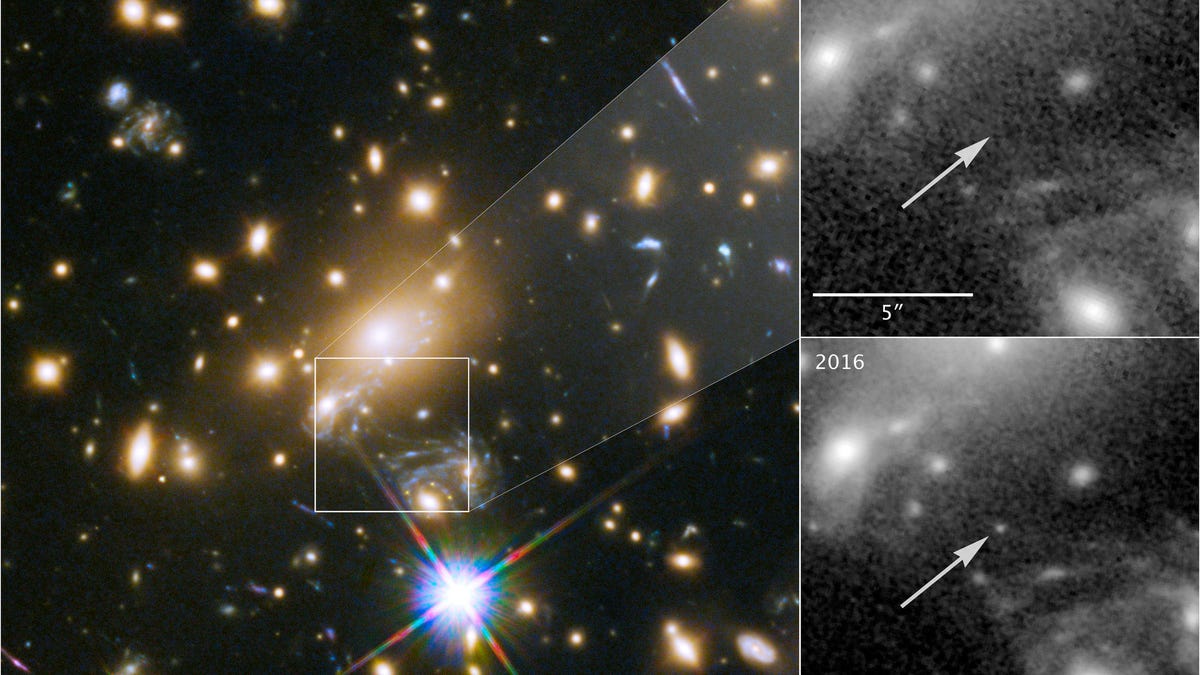NASA's Hubble telescope snaps most distant star ever seen
The space telescope brings us a look at Icarus, the farthest star ever seen, thanks to an assist from a cosmic magnifying glass.
On a clear day, you can see for miles. And with the right cosmic lens, you can see for billions of light-years. That's how NASA and the ESA's Hubble space telescope delivered an image of the most distant star ever seen.
The star is saddled with the official name "MACS J1149+2223 Lensed Star 1," but astronomers call it Icarus. Icarus came into focus thanks to gravitational lensing, which allows Hubble to use distant galaxies like a cosmic magnifying glass to see what's beyond.
The natural lens in space that allows us to see Icarus is a galaxy cluster called MACS J1149+2223, located about 5 billion light-years from Earth. Icarus itself is so far away it has taken 9 billion years for its light to reach Earth, NASA notes.
An international team of researchers published their findings on Icarus Monday in the journal Nature Astronomy.
"This is the first time we're seeing a magnified, individual star," said study lead Patrick Kelly of the University of Minnesota. "You can see individual galaxies out there, but this star is at least 100 times farther away than the next individual star we can study, except for supernova explosions."
Icarus is a blue supergiant, which is much bigger, hotter and brighter than our sun.
Scientists have been using gravitational lensing to study distant galaxies, but Icarus opens up new research avenues involving individual stars.
Said study co-author Alex Filippenko, an astronomer at the University of California at Berkeley, "There are alignments like this all over the place as background stars or stars in lensing galaxies move around, offering the possibility of studying very distant stars dating from the early universe."


